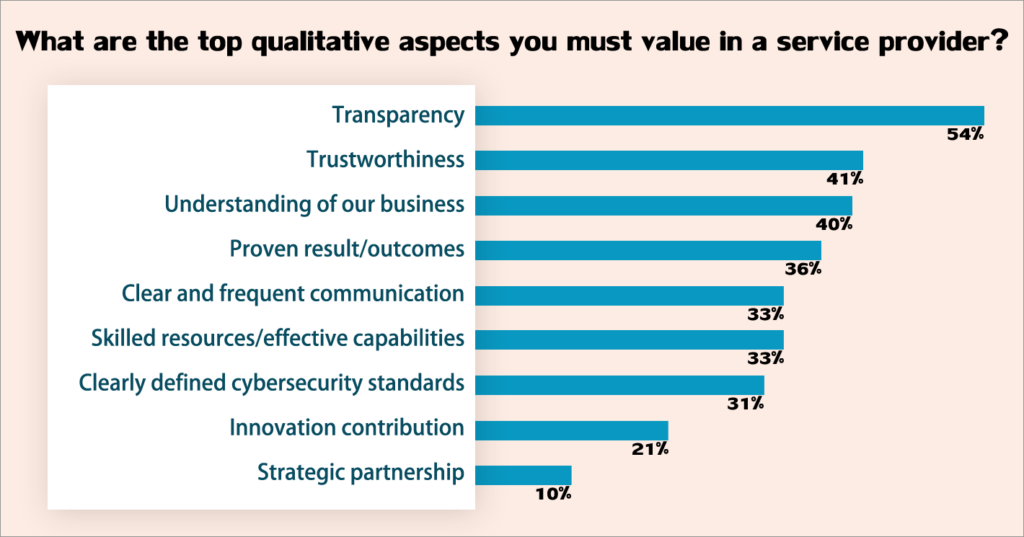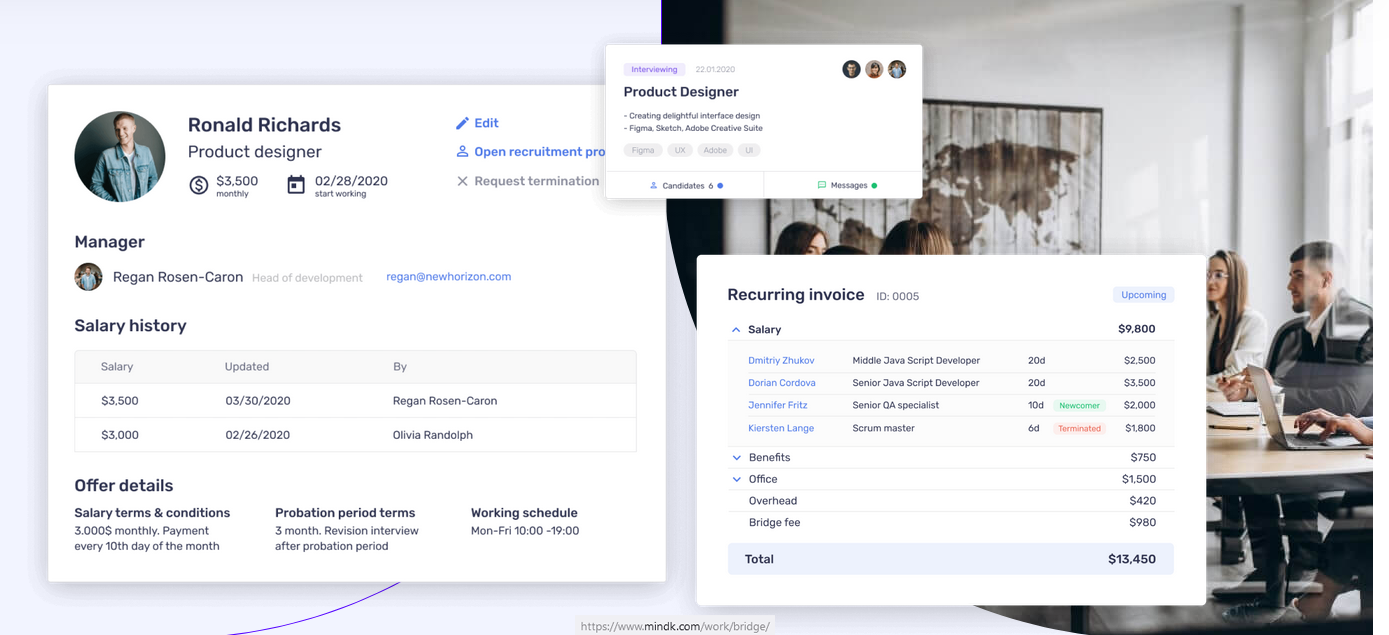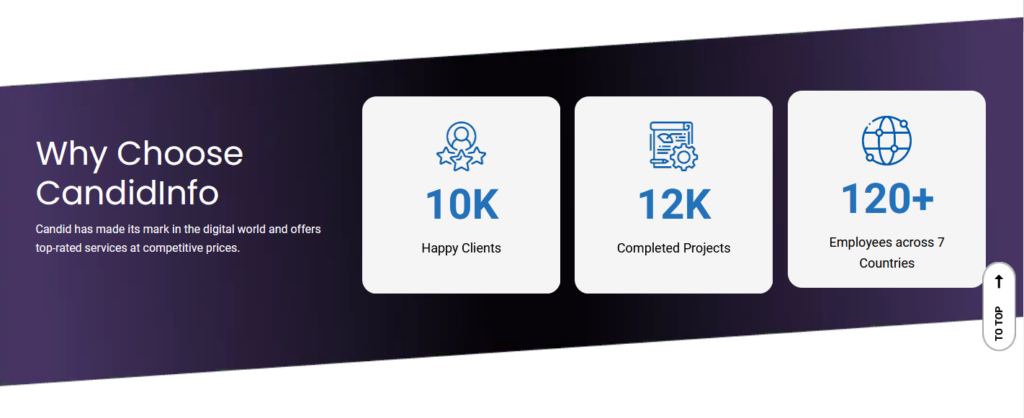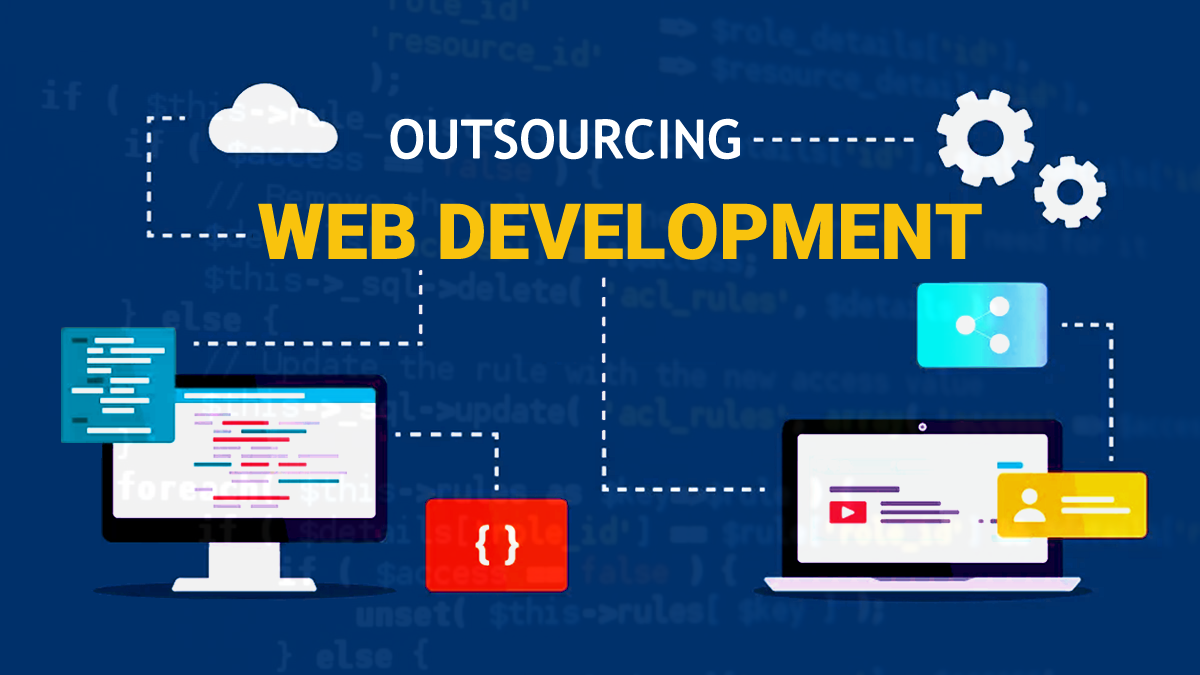Welcome to the realm of strategically-minded business choices! In the current business landscape, companies seeking to cut costs and enhance their ability to remain competitive are increasingly honing in on the concept of outsourcing web development. Delving deeper into this realm, a recent Deloitte report reveals that 76% of CEOs routinely outsource IT functions. Outsourcing web development is crucial, whether you’re a startup crafting a Minimum Viable Product (MVP) or an established company constructing intricate systems.
However, amid the potential advantages, a lingering issue persists. Clients and partners who have encountered challenges while dealing with less-than-reputable vendors share tales of misplaced trust, missed deadlines, and financial losses. Fear not; there is a way to surmount these obstacles and fortify your path in outsourcing web development.
How to Screen Web Development Outsourcing Companies

The right web development company is critical to the success of any online project. Here are four crucial pointers to help you make the best decision:
Find Vendors With The Expertise You Need
Conducting a thorough investigation is crucial when searching for a qualified tech partner for your online project. Explore organizations within your niche or those proficient in the specific technology essential for your project.
Initiate a search using terms like “fintech web development services” or “outsource website development.” This initial phase ensures that potential candidates closely align with the skills necessary for the success of your project.
A comprehensive analysis at this stage lays the foundation for a well-informed decision. By identifying and shortlisting organizations based on their relevant talents and expertise, you enhance your chances of finding a tech partner whose capabilities align seamlessly with your project needs. This proactive approach to identifying providers with the necessary knowledge sets the stage for a fruitful relationship and the successful execution of your online project.
Read Client Reviews
After compiling a list of potential suppliers for your web project, it’s crucial to delve into customer evaluations to assess their past performance. Utilizing platforms such as Clutch enables you to gauge the satisfaction levels of former clients, offering unbiased reviews and ratings.
This analysis of feedback becomes a pivotal stage in the decision-making process, providing a comprehensive understanding of a vendor’s strengths and potential areas for improvement. Carefully scrutinizing client evaluations allows you to narrow down your choices, ensuring that the selected tech partner aligns with your project objectives and expectations as you progress to the next step of the selection process.
Talk To Previous Customers
Engaging with a vendor’s previous customers is indispensable in the decision-making process. Despite glowing 5-star ratings, reaching out to past customers provides invaluable insights that extend beyond the surface. Actively seeking out these clients on networks like LinkedIn, initiating email exchanges, or scheduling meetings allows you to gain personal insights into the vendor’s performance.
Discuss specific project successes and the vendor’s approach to overcoming challenges. Direct engagement facilitates the acquisition of more detailed information, offering a comprehensive view of the vendor’s capabilities and how well they align with your project objectives.
During these conversations, focus on questions related to successful outcomes, the vendor’s collaborative dynamics, and their problem-solving processes. Understanding how the team navigated challenges can demonstrate their agility and commitment to client satisfaction. Actively soliciting feedback from former clients equips you with critical information, empowering you to make an informed decision about whether the vendor is the right match for your online project.
Also read: Mobile App Development Guide- Top to Bottom Analysis: How to Create, Fund and Earn from Your App
Assess Their Development Process
Investigating the development processes of potential tech partners is a crucial step in the evaluation process. Once you have narrowed down your list of applicants, schedule a call to discuss key points. Inquire about their project management tactics, communication procedures, and quality control measures. Additionally, it is essential to determine whether they provide post-release support, including upgrades and bug fixes.
Encourage a two-way conversation during these sessions. Prompt the vendor to actively comprehend your company and specific project needs, rather than merely asking questions. This interactive exchange ensures that the collaboration aligns with the expectations of both parties, laying the foundation for an effective partnership.
Key Considerations When Selecting An Outsourcing Partner

Ensure that your web development outsourcing partner meets all the necessary criteria. Here’s what you should consider:
- Case Studies and Reviews: Visit the company’s website for comprehensive case studies and client testimonials. Additional evaluations on platforms like Clutch can provide insights into the company’s performance and client satisfaction.
- Previous Project Experience: Review the company’s portfolio to confirm they have experience with projects similar to yours. This demonstrates their ability to address unique challenges in your industry or specific area.
- Knowledge of Specific Web Technologies: Examine the technologies the company has used in past projects. It’s crucial to verify their expertise in the programming language or framework required for your project.
- Excellent English Proficiency: Evaluate the English proficiency of developers during interviews. Effective communication is essential, and a team with strong English skills will better understand and meet your requirements.
- Transparent Pricing Models: Choose a firm with clear pricing models. Understand various options, such as fixed prices or time and materials, to have a clear understanding of the project’s cost structure from the beginning.
- Legally Binding Contracts: Ensure the firm provides a detailed contract covering all aspects, including fees, intellectual property rights, obligations, penalties, warranties, and compensations. This helps prevent misunderstandings and ensures everyone understands the collaboration’s parameters.
- Policies for Confidential Information Protection: Look for a vendor willing to sign a non-disclosure agreement (NDA) to safeguard your sensitive information and establish trust between the parties.
- Options for Flexible Engagement: Check if the tech partner offers flexible engagement options aligned with the scope, deadlines, and budget of your project. Consider the level of control and personal involvement that suits your needs.
- Transparent Communication System: Before starting the project, establish a communication format. Define expected response times, update formats, and the frequency of updates. Use platforms like Slack and Jira for effective project tracking and collaboration.
- Professional Team: Ensure you’re working with an experienced team. A well-rounded web development team typically includes a Project Manager, front-end and backend developers, and QA engineers. Additional roles may be necessary based on the specific requirements of your project.
Warning Signs To Steer Clear Of When Outsourcing Web Development
Be mindful of potential challenges, including budget overruns, subpar code quality, missed deadlines, miscommunication, and failed launches. These issues can have significant consequences when outsourcing web app development. Stay vigilant for these warning signs.
Lack Of Transparency
We’ve identified two essential characteristics for effective outsourcing based on our experience as both a customer and the CEO of a software company: transparency and a genuine concern for the work. Everything else takes a back seat. It’s crucial to be vigilant if a firm becomes evasive during discussions about their methods, timetables, or pricing; this could be a warning sign of potential issues.
Transparency becomes increasingly vital as the project progresses. A trustworthy outsourcing partner should provide regular progress reports, status updates, and product demonstrations. This ensures that you stay informed about the project’s status, fund allocation, challenges encountered, and anticipated outcomes. Never underestimate the significance of transparency in fostering a successful outsourcing partnership.
Communication Problems
Communication problems often pose obstacles in projects. For a project to succeed, the team must collaborate seamlessly with each other and the customer. Communication should not be a one-way street where you are solely responsible for initiating contact, arranging meetings, and following up.
While charming sales agents may be tempting, refrain from hastily signing a contract. Take the opportunity to have direct conversations with the engineers. Determine if they are proficient in English and enthusiastic about engaging in discussions.
Only 4% of qualified individuals successfully complete our vetting procedure because we uphold stringent standards for soft skills. We have observed that direct communication with engineers leads to increased client satisfaction, and we actively encourage it at all stages.
Insufficient Experience
If you encounter someone asserting to be a web development specialist, it’s crucial to demand tangible proof of their abilities. A robust portfolio showcasing high-quality work serves as a concrete demonstration of their skills. While certain projects may be confidential, a seasoned professional should be adept at articulating their profound understanding of your business and the key technologies they’ve engaged with.
In essence, actions carry more weight than mere words. A trustworthy web development expert not only articulates their proficiency but substantiates it through a track record of successful projects or a comprehensive comprehension of your specific industry and the relevant technology.
Surprisingly Cheap Price
Beware of ridiculously low costs. While it might be tempting to opt for the cheapest option, keep in mind that skilled engineers typically do not work for pennies on the dollar. Choosing the lowest bidder may lead to an inexperienced team, a project manager overlooking critical expenses, and a subpar codebase. Hidden costs and budget overruns may also become apparent. It is wise to request a detailed breakdown of all project expenses.
High Employee Turnover
Employee turnover can serve as a warning, indicating an issue with how the vendor manages its employees or a problem within the corporate culture. If engineers frequently leave your project, this is not a positive sign—high turnover results in expensive onboarding, knowledge loss, and low morale.
Successful outsourcing firms prioritize keeping their engineers content. Take MindK, for example, which boasts a low turnover rate of only 13%. This underscores the importance of maintaining a stable team for the success of your project.
Also Read: What is a Framework in Programming: The Key to Efficient Coding
Comparing Traditional Outsourcing And Staff Augmentation: Which Option Is Right For You?

When managing a given project, assembling a well-coordinated team of professionals is critical. Here’s how project outsourcing can help you, whether you’re launching a new product, improving a current one, or undergoing a digital transition.
| Project Outsourcing Dynamics | Vendor | Client |
| Leads the project team. | Oversees the team, budgets, and deadlines while addressing potential risks. | Gathers and analyzes client requirements. |
| Facilitates efficient team management, financial oversight, and deadline adherence while proactively managing risks. | Coordinates product demonstrations and delivers periodic updates. | Establishes project priorities and guides its overall direction. |
| Organizes product demos and provides regular updates. | Works with the client to collect project requirements. | Participates in project planning. |
| Works with the client to collect project requirements. | Attends demos and provides feedback. |
If your internal staff is overwhelmed, or if you want to redirect focus to other corporate projects and growth efforts, project outsourcing becomes a viable option.
Consider a well-known e-commerce behemoth facing a surge in demand. Constrained by budget limits and the need for rapid growth, they partnered with TechSolutions in web development over a decade ago. Over time, the remote staff not only met but exceeded expectations, seamlessly integrating into the client’s operations and playing a crucial role in their long-term success.
Team Augmentation Outstaffing
Team augmentation, also commonly referred to as outstaffing, is a straightforward approach to swiftly address specific tasks by leveraging remote personnel tailored to your requirements. This method empowers you to maintain full control over your project, eliminating the necessity for intermediaries between developers and your team.
In a team augmentation scenario, both the vendor and the client have specific obligations:
| Vendor’s Role | Client’s Role |
| Provide the necessary talent and handle all administrative tasks. | Specify staffing requirements. |
| Motivate developers to ensure high productivity. | Conduct interviews and assess test assignments to select candidates. |
| Offer tools for work and communication. | Facilitate effective onboarding for engineers. |
| Scale the team up or down based on demand. | Provide direction, oversee the work, and offer constructive feedback. |
Team augmentation is a favored option for businesses that already possess an in-house team but require a swift infusion of specific expertise. As an illustration, Yokoy, a Swiss FinTech company with a substantial investment exceeding $100 million, faced challenges when seeking an experienced DevOps engineer for the migration from Google Cloud Platform (GCP) to Microsoft Azure.
Faced with limited local resources, Yokoy opted to enlist the services of a specialist for a six-month period to overhaul the infrastructure and streamline deployment processes.
IT Consulting
Why it’s important: Gain insights on digital challenges from experienced industry professionals.
When you’ll need it: IT consulting proves valuable for various tasks, whether you’re designing a cloud-native architecture, analyzing your DevOps practices, or crafting a new data management strategy.
A prime example is the collaboration between a major European telecom firm and MindK (a software development and IT consulting company). Our experts delved into the company’s critical business operations and data streams. The outcome? The client received a comprehensive strategy for corporate automation and data management, laying the foundation for future expansion.
What Comes Next: Ensuring Project Success
If you’re considering outsourcing web development services, there are two straightforward ways to get started.
Are You Unsure About Your Requirements? Begin With Product Research!
This process can take up to 5 weeks and requires the involvement of a team that includes a Business Analyst, Software Architect, UI/UX designer, and Product Manager. Many clients initially have ambiguous specifications, leading to complications such as high expectations and missed deadlines.
With a product discovery phase, you can avoid all of that. It comprises a series of workshops designed to identify product goals, uncover user requirements, and establish clear success measures. Moreover, it translates these insights into precise specifications for your upcoming product.
You will receive a detailed cost estimate, user personas, a product roadmap, high-fidelity wireframes or an interactive prototype, and a solution specification.
Do You Know Exactly What You Want? Begin With MVP Creation!

This can take anywhere from 5 weeks to a year and requires a team that includes a Project Manager, Business Analyst, Web Developers, QA Experts, and, if desired, a UI/UX Designer and DevOps Engineer. A Minimum Viable Product (MVP) is software with only enough functionality to entice early adopters and elicit valuable feedback. It’s a smart method to reduce risks, confirm product demand, save money, and lay the groundwork for future success.
What you get: A fully working product, detailed test result reports, and server setup.
Conclusion

Choosing a web development partner is a crucial decision. Since you’re entrusting a corporation with bringing your ideas to life, it’s vital not to rush. Take the time to study all the facts and ask important questions thoroughly. This ensures that when outsourcing web development, you select a partner that is both trustworthy and knowledgeable.
FAQs
Why consider outsourcing web development?
Making the decision to outsource web development can be a smart move for various reasons. Firstly, it’s a strategic choice to save money. High-caliber developers can be found in countries with lower labor costs, expanding your access to a more extensive talent pool compared to what may be locally available. What’s even better? You can channel your focus into what you excel at – your core business – while leaving the technical intricacies to the experts. Sounds simple, right?
What are the risks associated with outsourcing web development?
Certainly, there are a few risks to be mindful of.
To begin with, communication breakdowns may arise, especially in the presence of time zone differences or language and cultural barriers. Companies like MindK proactively address this challenge through initiatives like English classes and soft skills training. However, before diving in, it’s prudent to evaluate your vendor’s communication skills.
Now, onto the more substantial risks. Consider the potential loss of project control, unforeseen costs, subpar product quality, data breaches, and security issues. Don’t fret, though – we have an in-depth essay that guides you through navigating and mitigating these risks.
How can I ensure effective communication with an outsourced development team?
Establishing clear communication lines is paramount. Utilize project management tools, schedule regular updates, and ensure that both parties have designated points of contact. Encourage open communication to address and resolve any issues that may arise promptly.
What role does project management play in the successful outsourcing of web development?
Effective project management is crucial. Confirm that the outsourced team has a dedicated project manager, employ project management tools, define clear goals, and establish milestones to gauge progress. This ensures a streamlined and successful outsourcing process.





